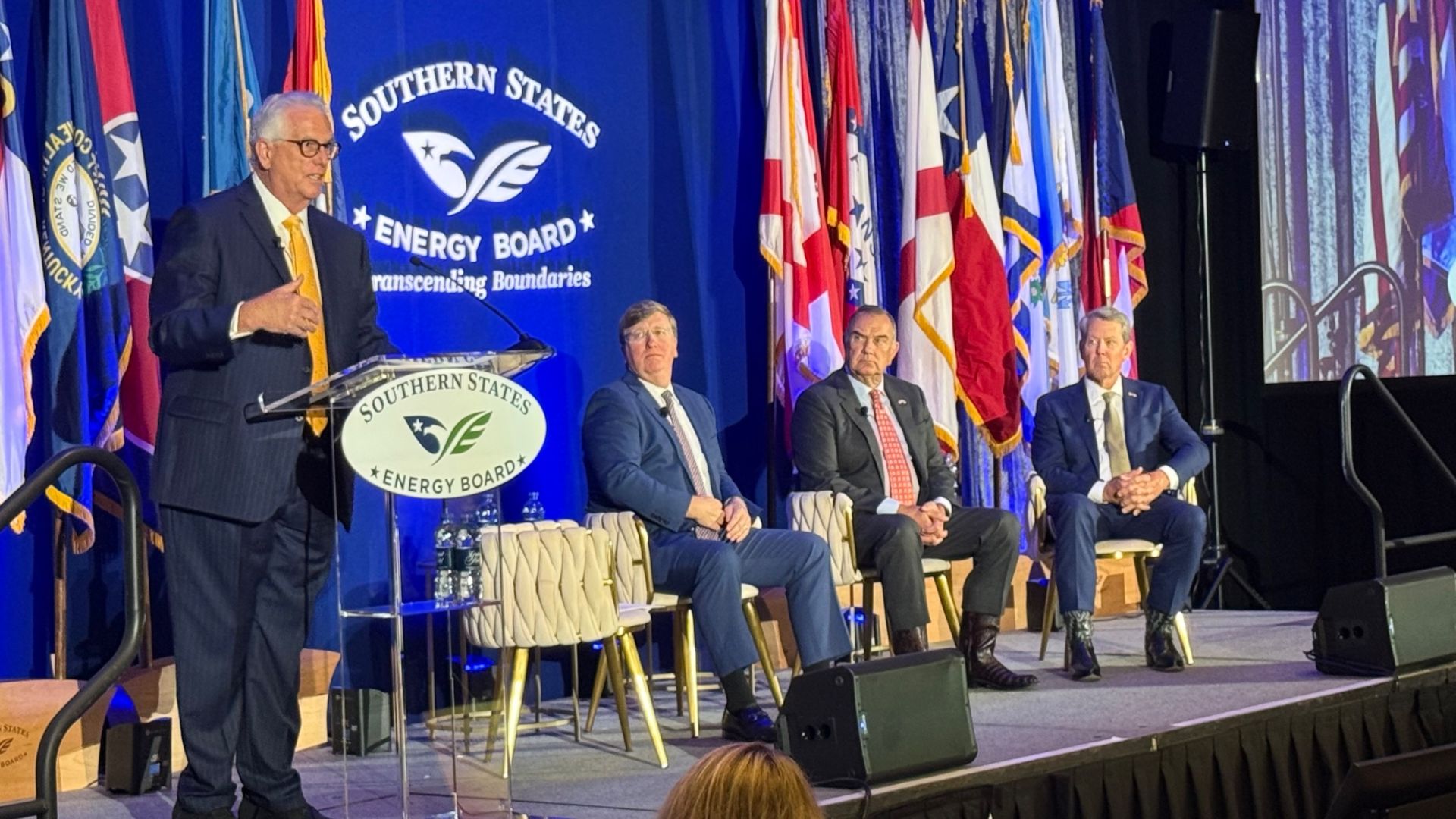I spent the past few days in Point Clear, Ala., with the Southern States Energy Board (SSEB). If you’re unfamiliar with SSEB, it was established by Congress in 1960 as a nonprofit organization of 16 southern states and two territories that brings together governors, legislators, and federal representatives to develop and advocate for effective regional energy and environmental policies and programs. SSEB has historically focused heavily on carbon capture sequestration, fossil fuels, and nuclear power.
On the first full day, SSEB hosted a Governors’ Roundtable featuring Georgia Governor Brian Kemp, Mississippi Governor Tate Reeves, and Missouri Governor Mike Kehoe. Top of mind question for everyone: How do we get as many megawatts built as quickly, and responsibly, as possible?
Aside from the major demand growth anticipated through AI and data centers, the states are seeing more manufacturing as well as increased growth from people moving to the Southeast. It was really refreshing to hear the governors talk about economic development and improving the livelihoods of their citizens, without even a hint of any culture war issues. The message was clear - we’re all in this together. Every megawatt matters.
SSEB also had presenters on nuclear, but slowly, folks are starting to realize that new nuclear power is still a future potential, not a today reality. Assuredly, extending nuclear licenses as well as conducting uprates on existing units are a few short-term opportunities.
But to get gigawatts - we’ll all be waiting for 15 years, maybe longer. There’s a bit of a debate as to whether small modular reactors (or SMRs, if you’re unfamiliar with the industry) or larger AP1000-type reactors. And as a first in my career, a few folks were earnestly discussing the possibility of fusion reactors - a technology that has been just 20 years away for the past 50 years.
Beyond nuclear, natural gas resources were the major topic of discussion. So many electric utilities, and even data centers, are looking to add more natural gas resources that there is now a significant backlog of requests for new natural gas plants. For an electric utility to order a new natural gas power plant today, most folks are starting to realize that it may take 5-10 years to order a plant before it becomes operational.
What do we do in the meantime? There’s also a conflict, too, between the large scale customers with the smaller or mid-size customers that also want gas resources.
SREA’s crunched the numbers for much of the Southeast: for every megawatt of natural gas being evaluated, there are two-to-three times as many megawatts of renewable energy resources in the generator interconnection queues. Over 120 gigawatts of renewables, with the vast amount of that being solar, are being studied.
Virtually nowhere in the country has any new nuclear reactors in the current queues. As a reminder, new generators cannot join the grid until they make it through the queues. So in some ways, renewable energy resources may become a bridge for other generation types in the near-term. If we need every megawatt, renewables are the quickest and often lowest cost options for much of the country.


